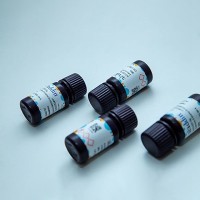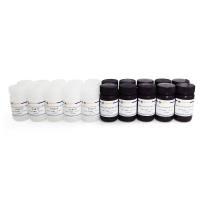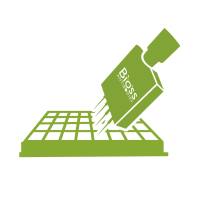Methods for Analysis of Photosynthetic Pigments and Steady-State Levels of Intermediates of Tetrapyrrole Biosynthesis
互联网
657
Tetrapyrroles and carotenoids are required for many indispensable functions in photosynthesis. Tetrapyrroles are essential metabolites for photosynthesis, redox reaction, and detoxification of reactive oxygen species and xenobiotics, while carotenoids function as accessory pigments, in photoprotection and in attraction to animals. Their branched metabolic pathways of synthesis and degradation are tightly controlled to provide adequate amounts of each metabolite (carotenoids/tetrapyrroles) and to prevent accumulation of photoreactive intermediates (tetrapyrroles). Many Arabidopsis mutants and transgenic plants have been reported to show variations in steady-state levels of tetrapyrrole intermediates and contents of different carotenoid species. It is a challenging task to determine the minute amounts of these metabolites to assess the metabolic flow and the activities of both pigment-synthesising and degrading pathways, to unravel limiting enzymatic steps of these biosynthetic pathways, and to characterise mutants with accumulating intermediates. In this chapter, we present a series of methods to qualify and quantify anabolic and catabolic intermediates of Arabidopsis tetrapyrrole metabolism, and describe a common method for quantification of different plant carotenoid species. Additionally, we introduce two methods for quantification of non-covalently bound haem. The approach of analysing steady-state levels of tetrapyrrole intermediates in plants, when applied in combination with analyses of transcripts, proteins, and enzyme activities, enables the biochemical and genetic elucidation of the tetrapyrrole pathway in wild-type plants, varieties, and mutants. Steady-state levels of tetrapyrrole intermediates are only up to 1/1,000 of the amounts of the accumulating end-products, chlorophyll, and haem. Although present in very low amounts, the accumulation and availability of tetrapyrrole intermediates have major consequences on the physiology and activity of chloroplasts due to their additional photoreactive and possible signalling functions. Although adjusted for Arabidopsis tetrapyrrole metabolites, the presented methods can also be applied for analysis of cyanobacterial and other plant tetrapyrroles.









